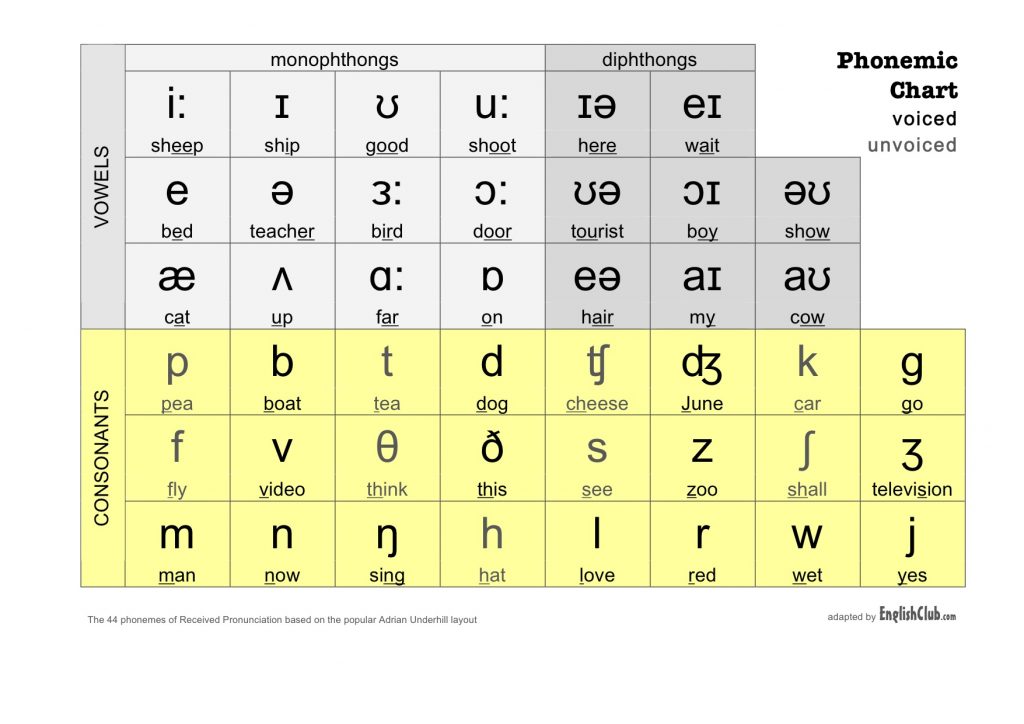
Have you ever flicked through a dictionary to find a word, and then noticed that right next to it there is a set of symbols, some of which resemble the letters you are used to using, but some of which are completely different?
These symbols are there to give you a guide to how the word is generally pronounced, and they are part of the International Phonetic Alphabet, or IPA.
The History of the International Phonetic Alphabet
So that is what the IPA is. But who had this idea in the first place, and how long has it been in use?
The very first version of the IPA was developed during the 19thcentury. An organisation called the Phonetic Teachers Association decided that it would be useful for students of foreign languages to have a guide to pronunciation. They were mostly involved with teaching English, French and German as foreign languages, and the very first version of the IPA was intended to reflect the sounds of those three languages.
A Symbol for each Distinctive Sound
The IPA was invented so that there could be a separate symbol to represent each distinctive sound – for example, you may pronounce the vowels in bath, cat and wall differently, but they are all written with the letter a. In the phonetic alphabet, each has a separate symbol to reflect the different sound:
Vowel Symbol
bath /bɑːθ/ ɑː
cat /kæt/ æ
wall /wɔːl/ ɔː
An even more obvious set of letters is ‘ough’, which has a number of different pronunciations in English – how is a learner supposed to work out what to do with words like rough, cough, through and so on, when they look almost the same but sound so different?!
Vowel Symbol
rough /rʌf/ ʌ
cough /kɒf/ ɒ
through /θruː/ uː
The original version of the alphabet was based on the Lain alphabet that we use for all three of the languages the IPA was first designed for. You can see and recognise letters such as f, k, b and w in the examples above. However, some symbols in the IPA are based on the Greek alphabet, such as /θ/ which is used to represent the ‘th’ sound at the end of ‘bath’, or at the beginning of ‘think’. Obviously, it’s no coincidence that this is exactly the sound it has in the Greek alphabet!
Further Development of the International Phonetic Alphabet
As time went on, people realised that this alphabet could be used for far more than English, French and German, and so it underwent a number of revisions. Sounds that did not exist in the original three but which were part of other languages, such as Arabic, Greek, Turkish or Russian, needed to be represented, and so an updated alphabet was produced in 1900, and then again four years later.
Since that time, there have been numerous revisions, with new symbols added or clarifications and improvements made so that the IPA can truly live up to its name as an international tool representing the sounds of all languages. The most recent addition to the alphabet was in 2005, and as recently as this year, 2018, a new font has been introduced that is more suitable for use on a computer screen.
What about Regional Accents?
So how does it work with different accents or dialects? How can the IPA tell you how to pronounce a word when the word might be pronounced differently depending on where you live. The girls in the video above both speak English but they pronounce a lot of words really differently.
And of course, there are so many accents even within each country. A person from Scotland sounds very different to someone from Essex. And a Texan doesn’t sound at all like someone from California.
Dictionaries only have so much space, and their primary purpose is to tell you what a word means and how to use it, which means that as far as pronunciation is concerned, they stick to the basics: only one or two pronunciations are given, and in English these are generally listed as BrE (British English) and US (United States).
It is not possible for every regional accent to be reflected in a standard dictionary, although there are some interesting local projects that try to transcribe local pronunciations.
Phonemic Chart
This phonemic chart uses symbols from the International Phonetic Alphabet (IPA). IPA symbols are useful for learning pronunciation. The symbols on this chart represent the 44 sounds used in British English speech (Received Pronunciation or RP, an educated accent associated with but not exclusive to south-east England).




